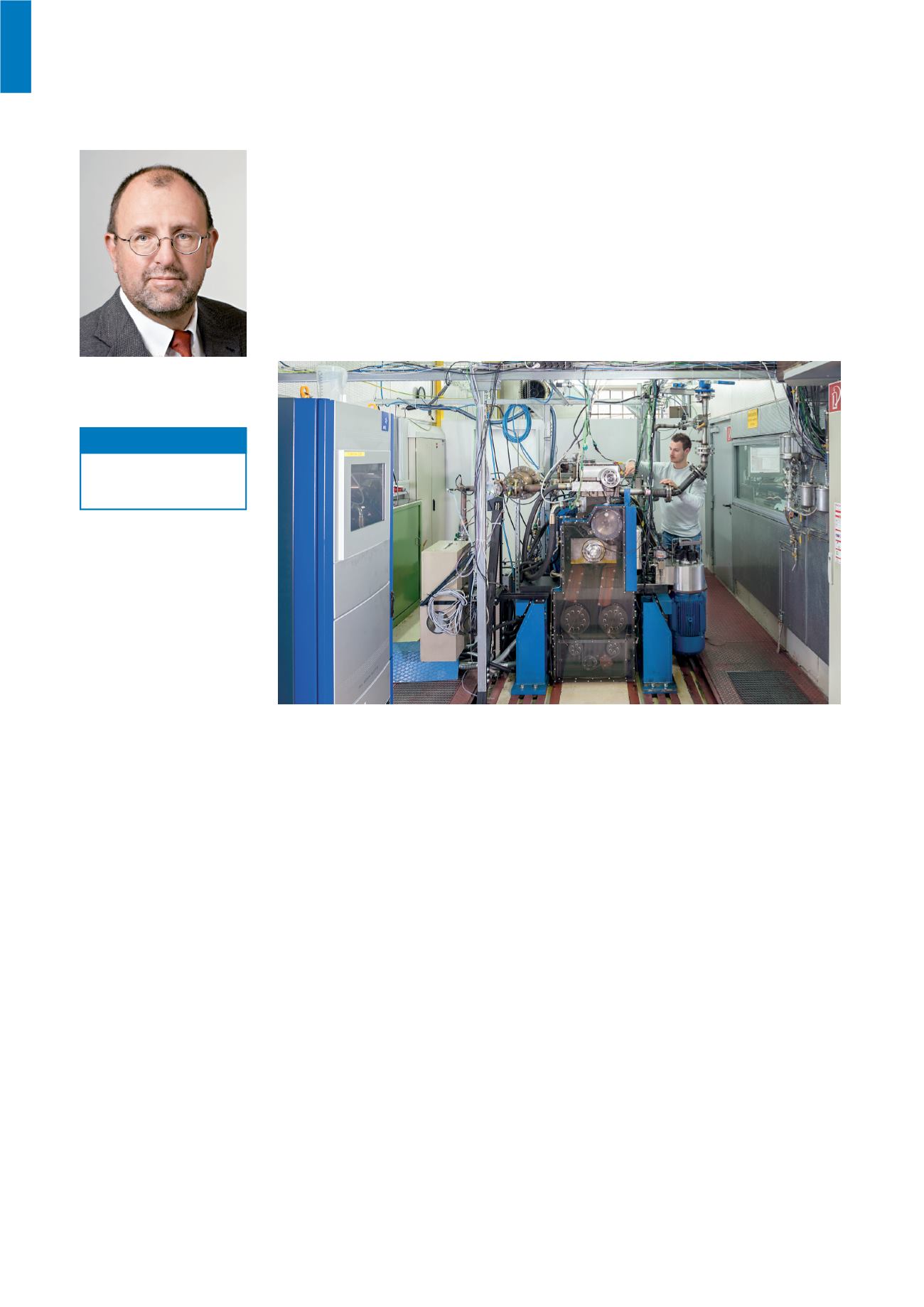

290
Internal Combustion Engines
Internal Combustion Engines
Engine design and simulation, combustion technologies, and experimental evaluation
Prof. Dr.-Ing.
Georg Wachtmeister
Combustion Technologies – CFD-Simulation –
Emission Reduction
The reduction of engine emissions and
fuel consumption are drivers for the
improvement of combustion technology.
Engines for gasoline, diesel, and natural
gas are developed and built at the institute
and are available for industrial or public
funded research projects. A key com-
petence for the realization of our engine
concepts is the application of professional
CFD simulation software, which is used
to predict and optimize the gas exchange
n
The focus of the Chair of Internal Combustion Engines in 2016 was to
extend efforts on the reduction of engine-out emissions by enhancing
combustion technology, engine after-treatment, emission measurement
techniques, and the knowledge on fuel properties and fuel composition.
Favorable emission behavior, high efficiency and low complexity of
internal combustion engines will be crucial in the future, as alternative
drive technologies emerge. Especially for long-distance or high-power
applications, internal combustion engines will have to ensure clean and
sustainable mobility and energy supply today and tomorrow.
A highlight in 2016 were the first experi-
mental results using oxymethylene ether
(OME) fuel in a diesel engine. OME burned
almost without releasing particles and
showed extremely low concentrations of
harmful substances in the raw exhaust
gas. Using a simple oxidation catalyst,
the tailpipe emissions were below the
www.lvk.mw.tum.de lvk@lvk.mw.tum.dePhone +49.89.289.24101
Contact
phase, in-cylinder swirl, tumble or turbu-
lence, and the phases of fuel injection,
mixture formation, and combustion. Simu-
lation results are used to design improved
geometries of the combustion chamber or
injector nozzles and are then validated on
one of our 13 engine test benches. Engine
out emissions are measured by means of
up-to-date FTIR technology and a modern
particle counting system. We use compo-
nent test benches to evaluate hydraulic
strict Euro VI limits even without using
a particulate filter or SCR system. OME
is a synthetic fuel and can serve as a
storage medium for fluctuating renewable
energy in a CO
2
-neutral future. The costs
of OME production are estimated below
20% compared with conventional E-fuels
(Fischer-Tropsch).
Test bench with clean OME single
cylinder engine


















